These spectacular structures aren’t just a means to an end—with their breathtaking views and rich histories, they are part of the destination.
15 Visually Stunning Pedestrian Walkways Across the U.S.
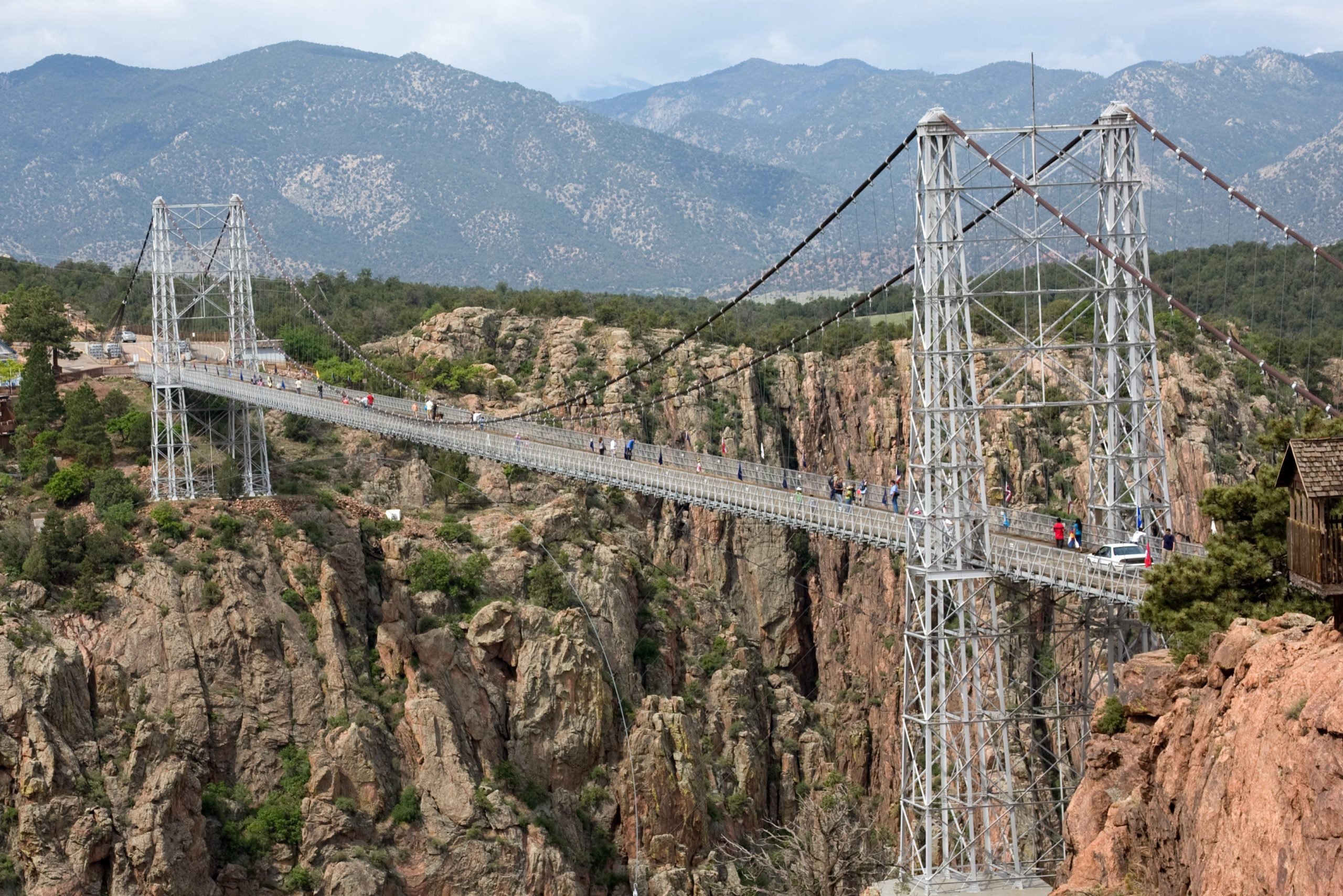
These bridges were made for walking
Bridges can be more than a means to get from one side to the other—though, of course, that’s usually their primary function—and they’re not just for cars. While some have pedestrians sharing part of the road with cars or cyclists, others permit only your feet as transportation. And many of these bridges won’t only help you increase your step count; they’ll also transfix you with their interesting architectural features, neat backstories, and eye-catching views. Get started with these stunning pedestrian bridges around the country, whether you’re taking one of these great American road trips or checking out the best-kept secret in your state.
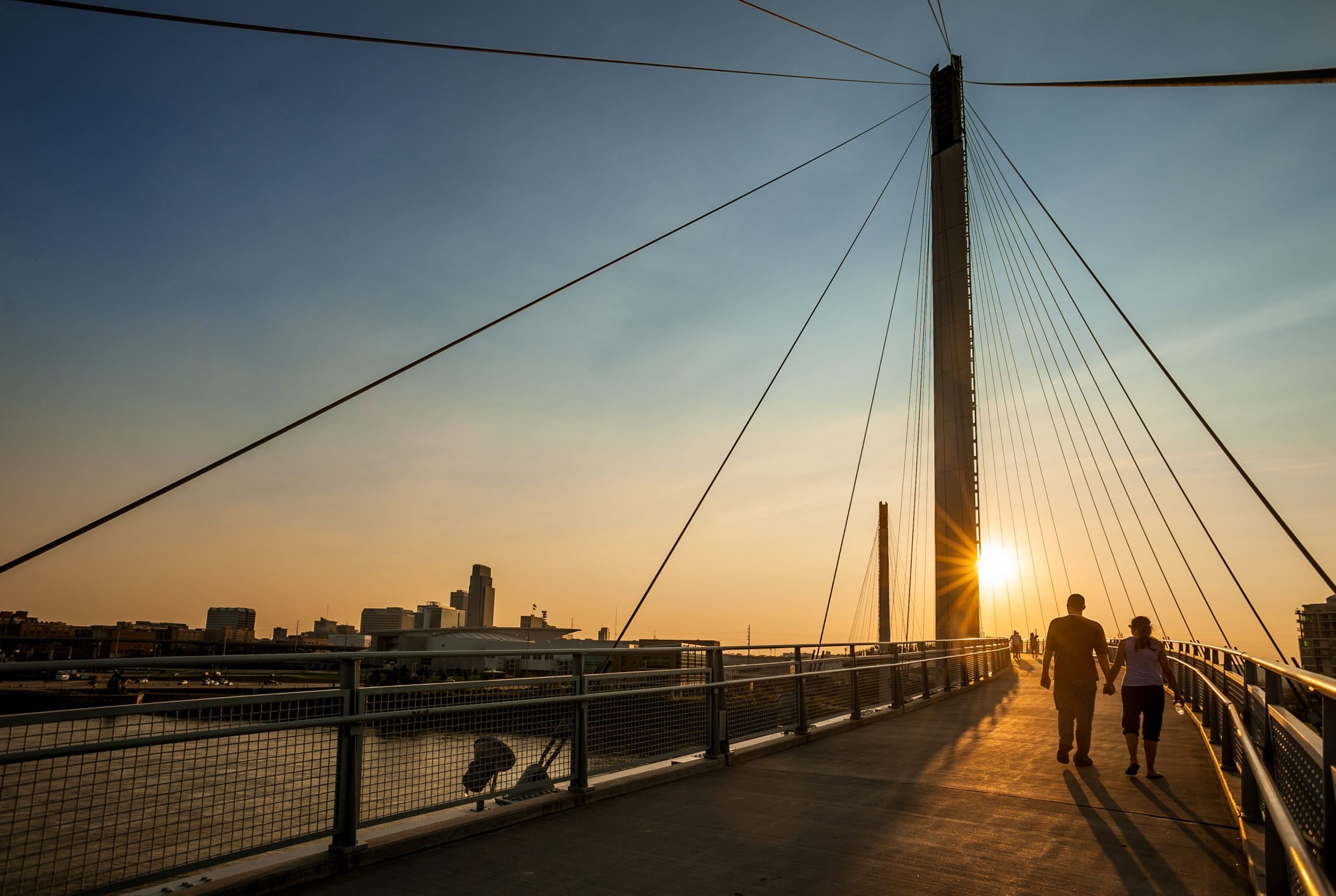
Bob Kerrey Pedestrian Bridge, Omaha, Nebraska
This 3,000-square-foot bridge that stretches across the Missouri River from Omaha to Council Bluffs, Iowa, is big on personality—so much that “he” has his own Twitter handle, Instagram handle, and vlog. He? Yes, he. Even though this bridge is named after the former Nebraska senator who helped raise the funding that led to its opening in late September 2008, the locals just call him Bob the Bridge. In fact, those who walk over often participate in what’s known as “Bobbing”—putting their feet between two states. Capture the moment on your phone, and be sure to tag it with #ItHappensOnBob. By the way, Bob’s also got a roommate. A kid-friendly, blue-colored troll statue named OMAR, which stands for Omaha Metro Area River, lives right underneath Bob. Don’t worry; OMAR likes meeting people and taking pictures with them. If Omaha sounds delightful, that’s because it is—in fact, it made our list of the 50 best places to live in the United States.
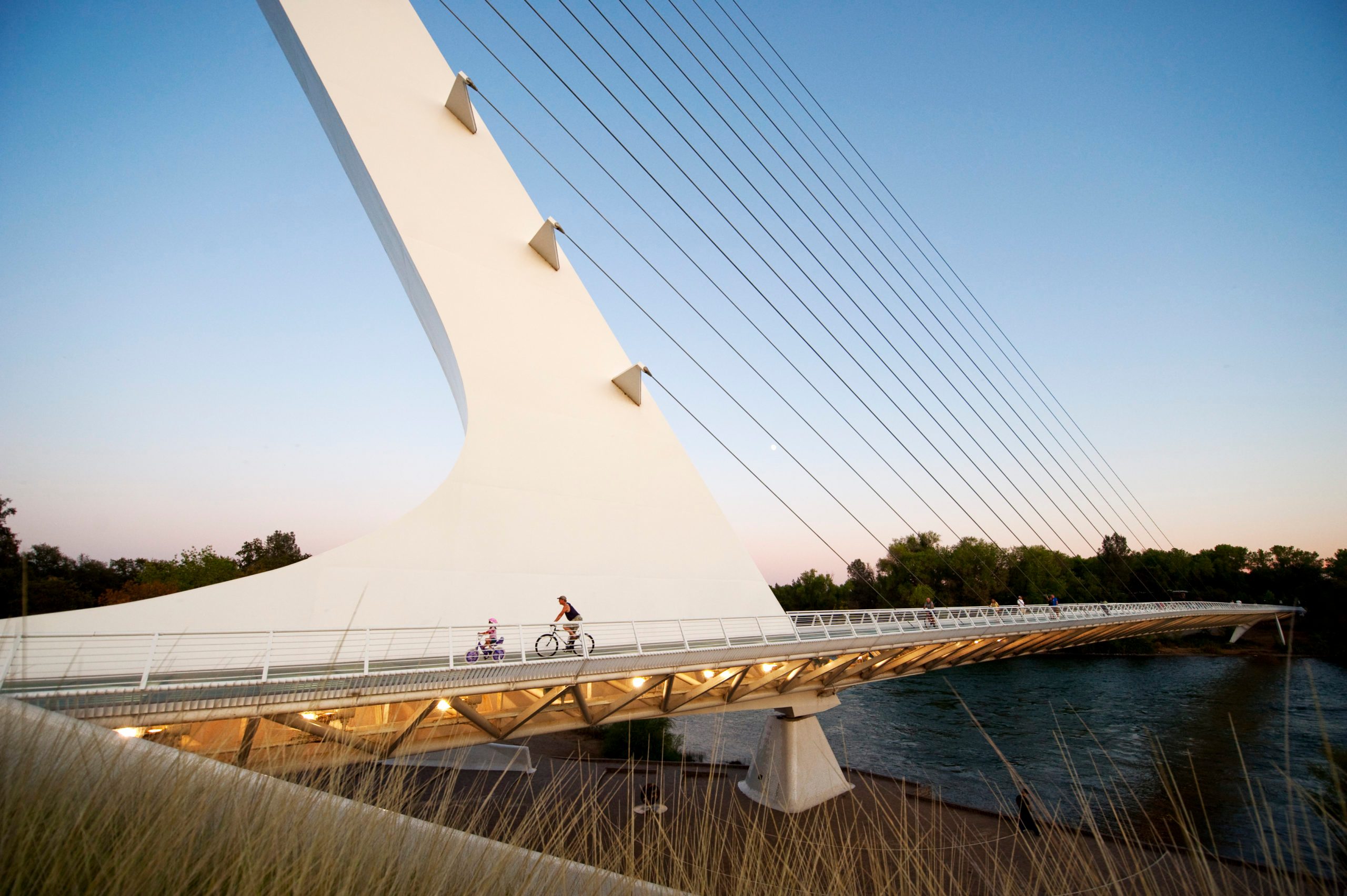
Sundial Bridge, Redding, California
Located in Turtle Bay Exploration Park along the Sacramento River, this bridge delivers on its name. It’s a working sundial whose shadow traces an arc so large that it can record only four hours a day; sadly, during winter, its accuracy diminishes because the shadow is too far into the park’s arboretum to be seen. Nonetheless, the Sundial Bridge—which opened on July 4, 2004—has other noteworthy features. Designed by architect and engineer Santiago Calatrava, who also did New York City’s World Trade Center Transportation Hub, this glass-deck suspension bridge serves as the downtown entrance to the Sacramento River Trail system and links to the park’s northern and southern campus entrances. It’s also environmentally friendly; its tall pylon and cable stays prevent the need for water supports, the creation of which would have disrupted a nearby salmon-spawning habitat. In January, runners in the annual Redding Marathon finish by crossing the bridge.
The Sundial Bridge’s designers weren’t the first to use the sun as a major design element. These ancient monuments were built around the summer solstice.
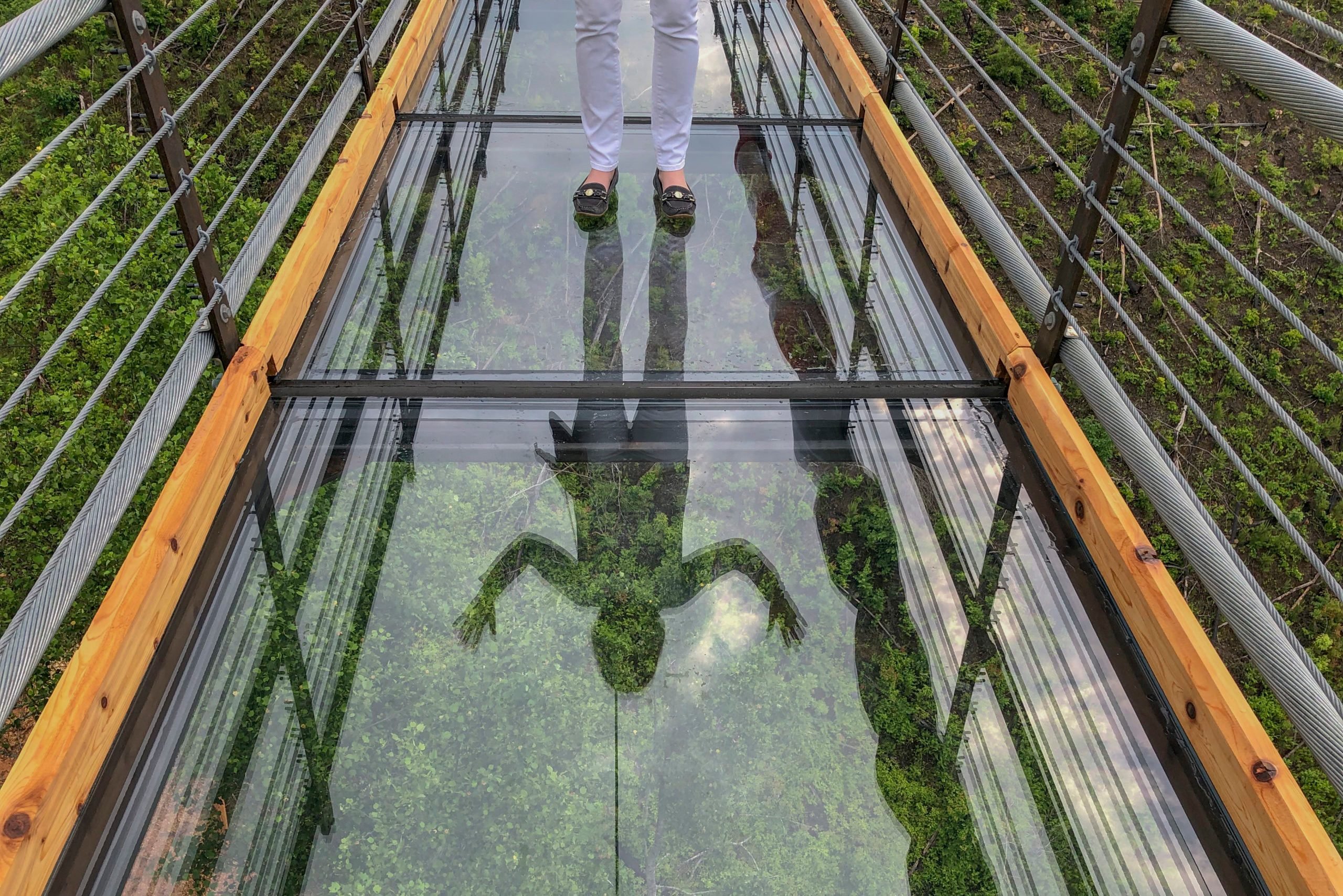
Gatlinburg SkyBridge, Gatlinburg, Tennessee
Part of the Gatlinburg SkyLift Park, North America’s longest pedestrian suspension bridge opened in May 2019 and offers panoramic views of the Smoky Mountains along with city scenes of Gatlinburg. The idea for the bridge came from the park’s general manager, Randy Watson, who thought that a bridge would offer visitors the perfect spot to take in top-notch views of the Smokies. From the park’s mountaintop SkyDeck, the SkyBridge stretches approximately 680 feet in length across a deep valley; at its highest point, it measures 150 feet off of the ground, roughly 500 feet above downtown Gatlinburg and 1,800 feet above sea level. The bridge’s middle section contains glass-floor paneling, so visitors can both walk across and look down to see the ground below them (if they dare).
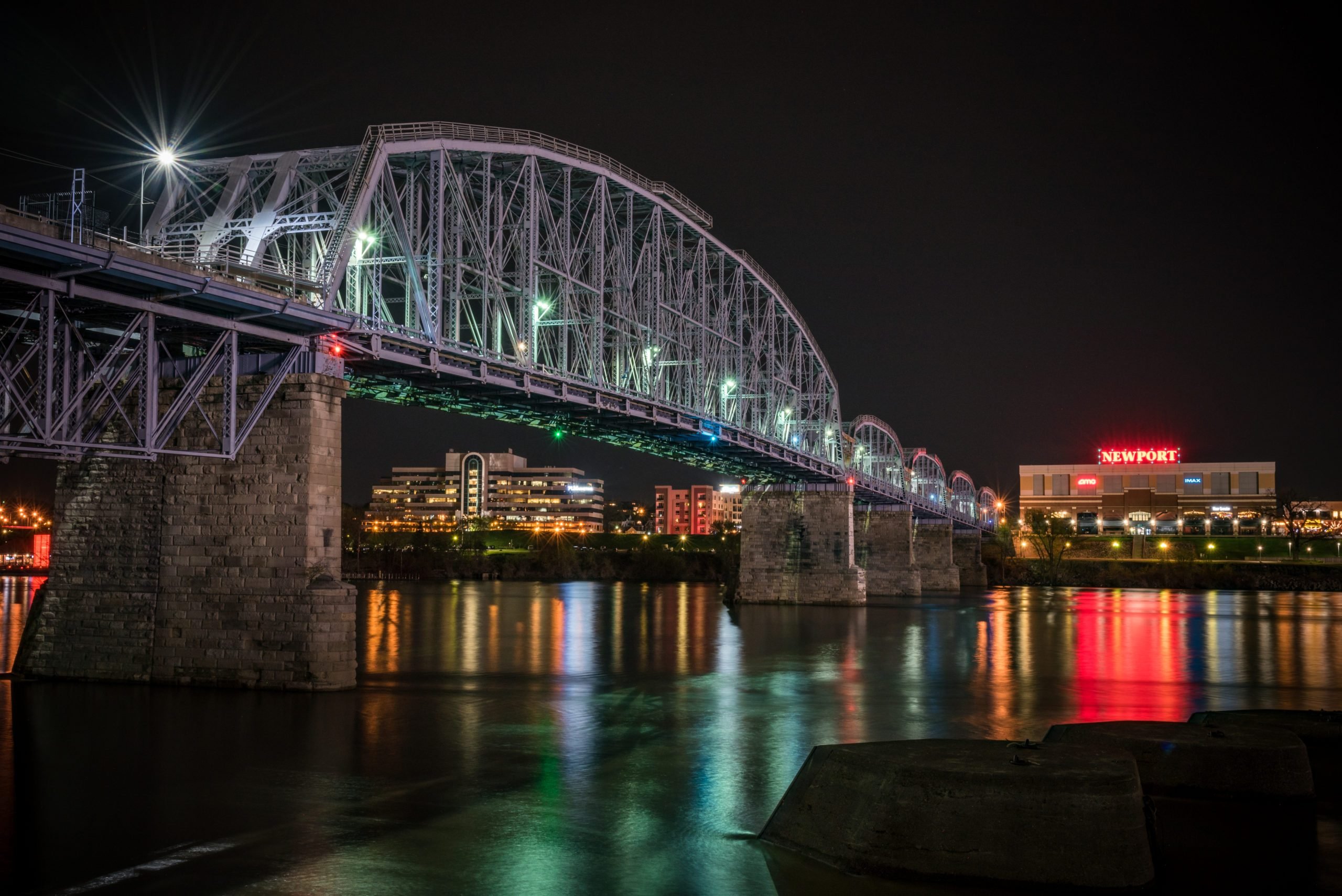
Newport Southbank Bridge/Purple People Bridge, Cincinnati, Ohio
Nine bridges cross the Ohio River within the Cincinnati River, but only one of them is purple and for pedestrians only. While it didn’t become a walkway until 2006, this half-mile structure was originally a railroad bridge that opened seven years after the American Civil War ended. Over time, the bridge changed names and purposes, but in 2001, a $4 million state-funded restoration project for its repainting and restoration improved its rickety state. So, why is this bridge purple? Focus groups consistently liked purple and green, and a committed volunteer tipped the scales in purple’s favor, backing it up with psychological research and explaining that it was a good color for “public consumption.” Here are more of America’s most beautiful lesser-known bridges.
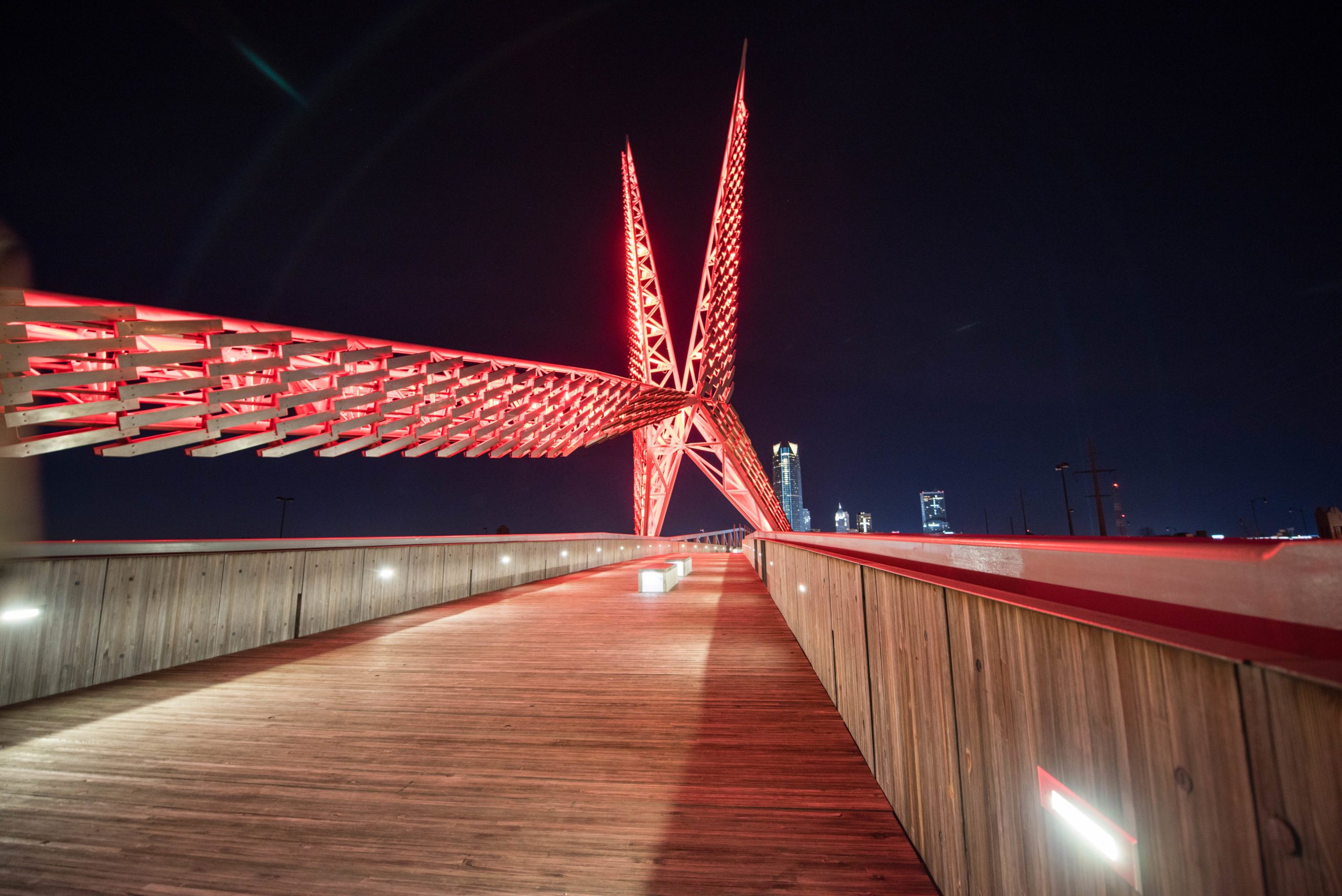
Skydance Bridge, Oklahoma City, Oklahoma
The show-stopping shape of the Skydance Bridge was inspired by Oklahoma’s state bird, the scissor-tailed flycatcher. It not only soars above the heart of downtown Oklahoma City—it also holds a 197-foot-tall community art sculpture that lights up in various colors to recognize national holidays and festivals. Opened in April 2012, this 380-foot-long by 20-foot-wide pedestrian bridge was placed in its location over Interstate 40 for a very specific reason: because of Oklahoma City’s “Core to Shore” vitality initiative aimed at connecting the city’s downtown area to the shore of the Oklahoma River. The Skydance Bridge links to the upper and lower levels of Scissortail Park, a 40-acre urban oasis and gathering spot. Let this inspire your next trip—Oklahoma City is actually one of the best weekend getaways in America.
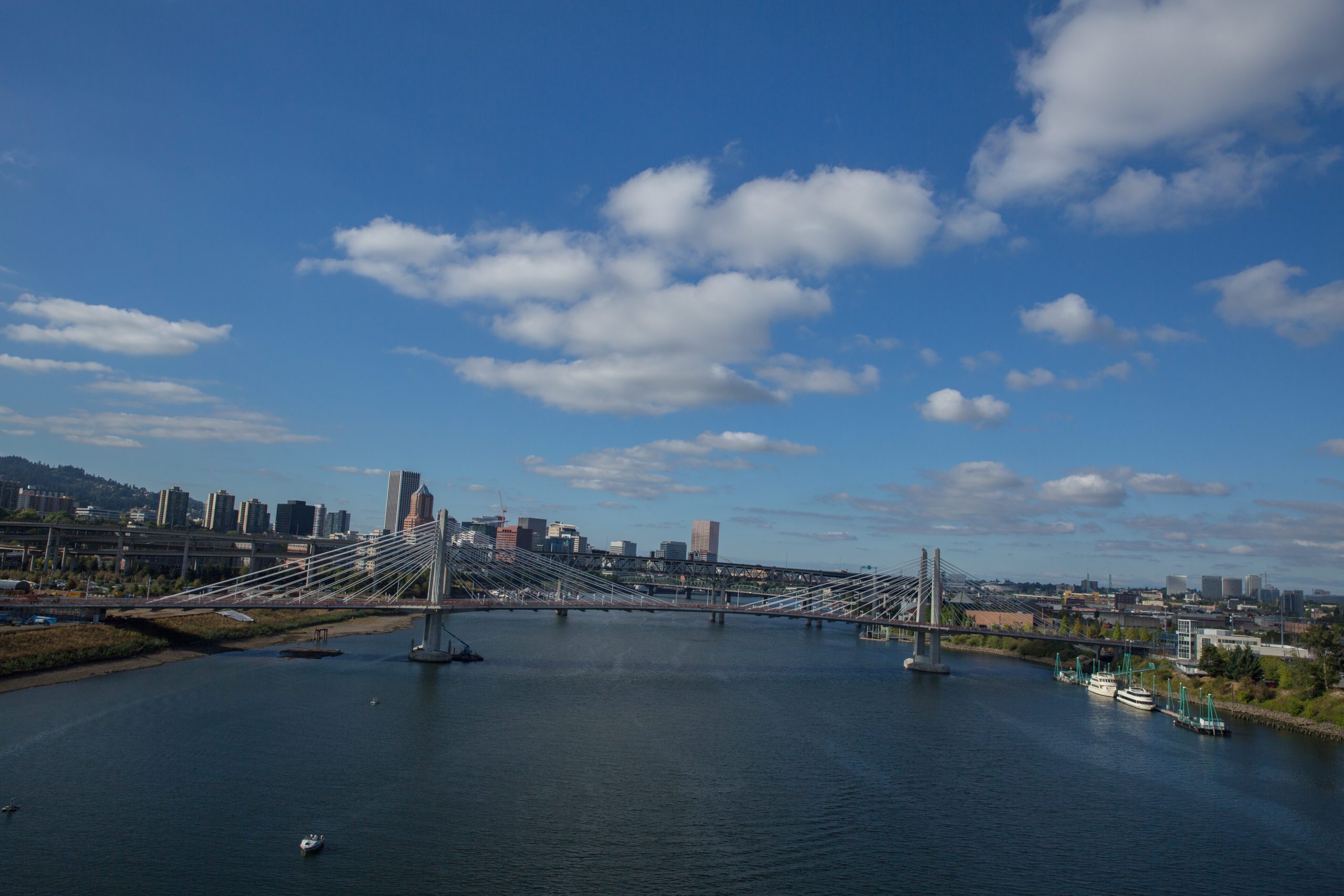
Tilikum Crossing, Bridge of the People, Portland, Oregon
Since its public welcoming in September 2015, this cable-stayed bridge spanning the Williamette River has stayed busy bridging Portland’s South Waterfront and Central Eastside Industrial District. Not only are pedestrians welcome to walk over it, but this bridge also carries the distinction of accommodating cyclists, buses, and Portland’s MAX Orange Line. However, cars are not allowed. Interested in biking across Tilikum? First, you need to choose the best bike for you.
The bridge also reflects many other parts of its location. “Tilikum” means “people” in the native Chinook language, and the bridge’s design has numerous nods to nature. There are Osprey nesting poles at its ends, as well as a sonic-dish installation on the east bank to amplify river sounds; plus, angles formed by the bridge’s cables mirror the outline of Mount Hood. LEDs also light up the entire bridge, changing color and pattern based on how fast, deep, and cold the river is flowing.
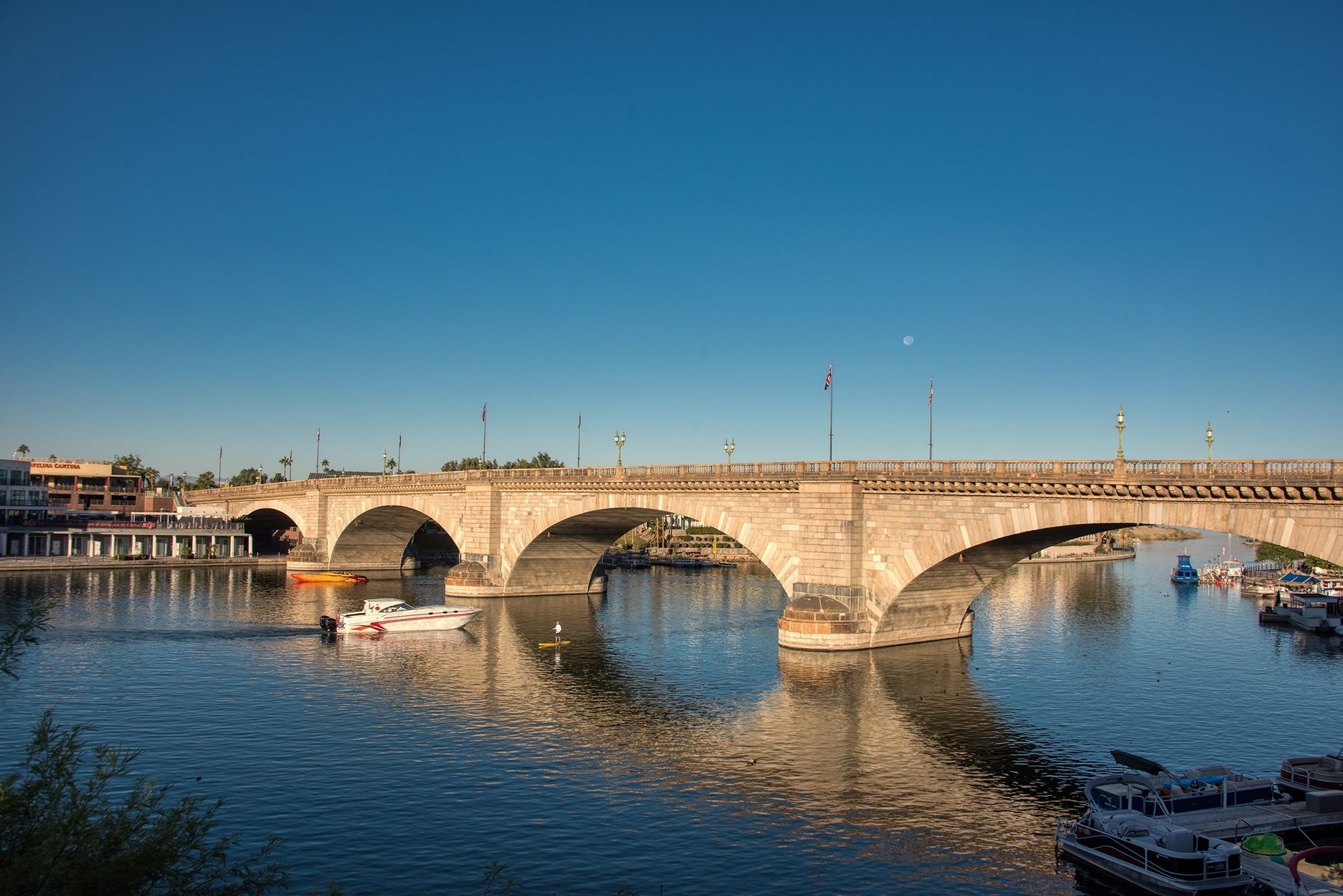
London Bridge, Lake Havasu City, Arizona
Arizona’s second-largest tourism draw after the Grand Canyon, this London Bridge does trace its roots back to England. It was the second version of the famous bridge, which was completed in 1831 but couldn’t handle the weight of the next century’s automobiles and began sinking into the Thames. The city of London sold it to Lake Havasu City’s founder, Robert P. McCulloch, in April 1968 for a winning bid of $2.4 million (which would be more than $17 million today). All of the dismantled bridge’s 10,276 exterior granite blocks made their way from the U.K. via the Panama Canal to California and then by truck to Arizona. It took three years to reconstruct the bridge, which was rededicated in October 1971. It also reflects some World War II history, with bullet holes from the London Blitz and etched-in names of two U.S. soldiers.
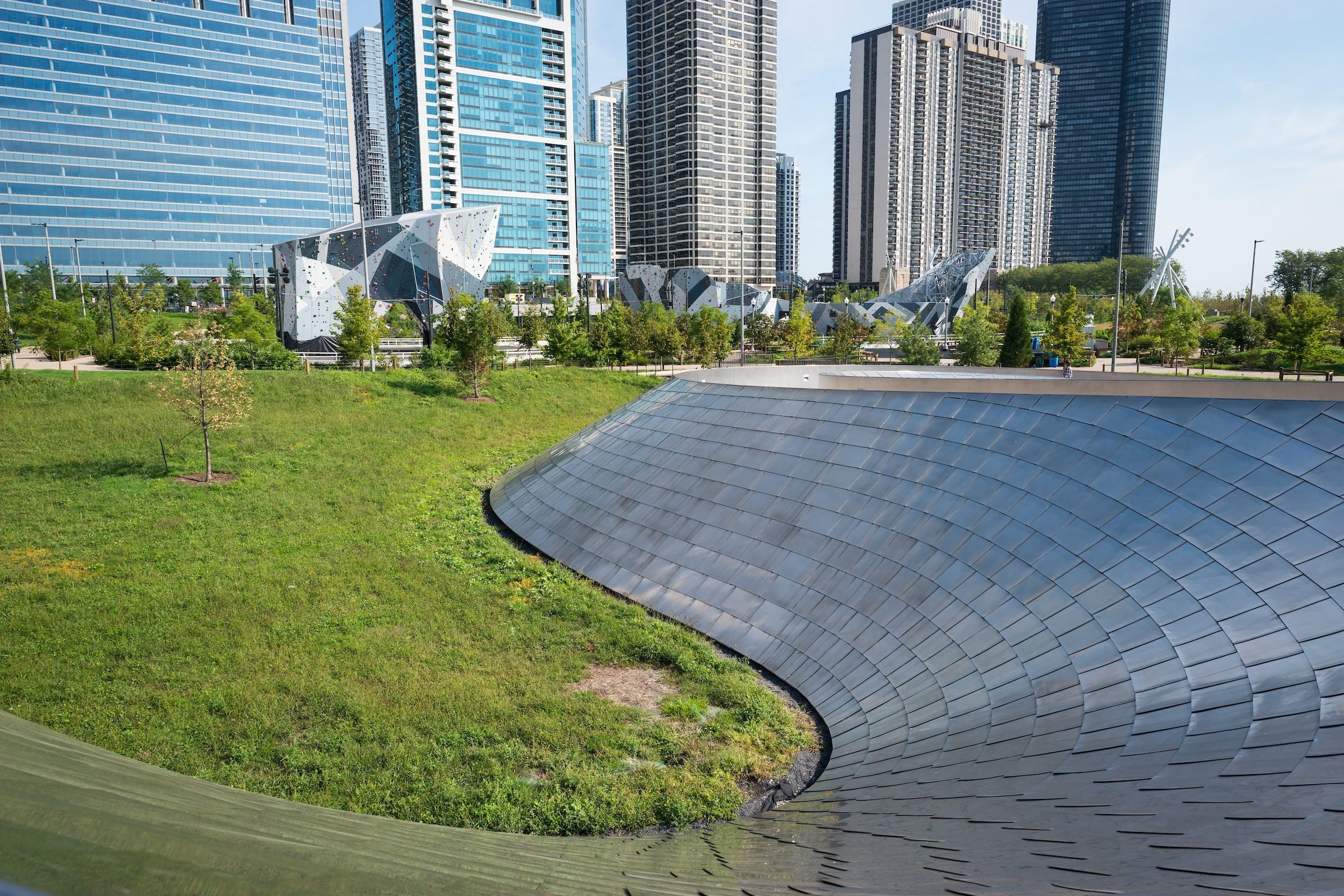
BP Pedestrian Bridge, Chicago, Illinois
In Chicago’s Loop area within Millennium Park, this 925-foot-long bridge stands out with its winding shape. As the first bridge designed by contemporary architect Frank Gehry, BP’s brushed stainless-steel panels are visually stunning but also quite multipurpose. First, they create an acoustic barrier for blocking out the noise of traffic from the adjacent Columbus Drive. Then, the bridge connects Millennium Park both to Maggie Daley Park over Columbus Drive and Chicago’s lakefront; it also links to Grant Park’s eastern and western areas to provide accessibility for people with disabilities. One more thing: The snake-like bridge is encompassed with signature views of the Chicago skyline. While we’re on the subject, have you ever wondered why Chicago is called the Windy City? Believe it or not, it has nothing to do with the weather.
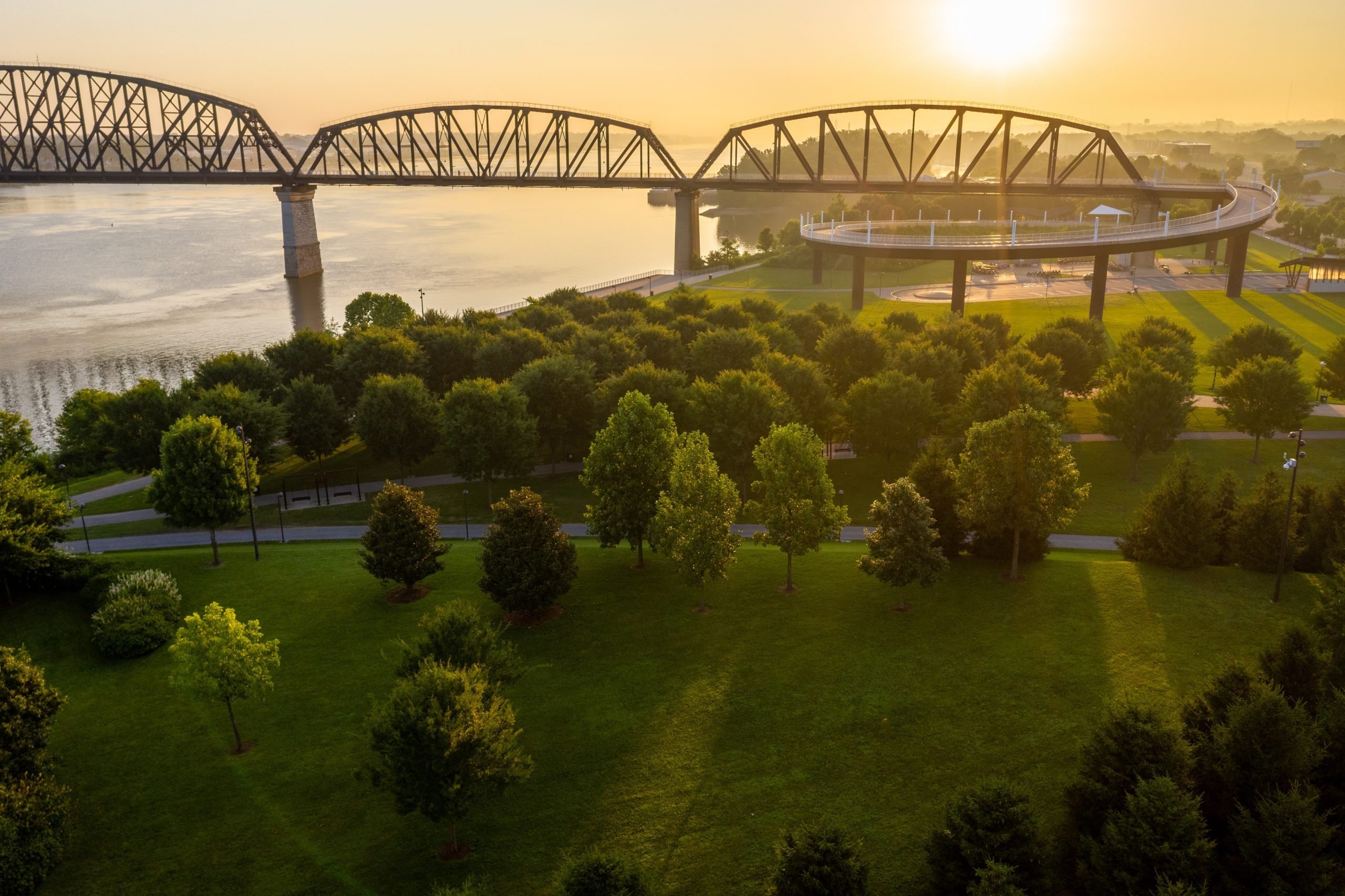
Big Four Bridge, Indiana and Kentucky
Named after the now-defunct Cleveland, Cincinnati, Chicago, and St. Louis Railway (aka the “Big Four Railroad”), this former railroad bridge reopened for pedestrian use in February 2013. Linking Waterfront Park in Louisville, Kentucky, to Jeffersonville, Indiana, over the Ohio River, the half-mile-long bridge welcomes more than 1.5 million visits from walkers, scooters, and bikers annually. Built in 1895, the six-span former railroad truss bridge serviced passengers and freight until it was decommissioned in the late 1960s; however, it still kept its place along Waterfront Park as part of the park’s Waterfront Master Plan. It continues to shine bright in every sense of the word, thanks to an LED lighting system that wraps its iron fretwork in vibrant colors from twilight until 1 a.m. every night. If you’ve ever wanted to tour America by train, put these scenic train rides on your must-do list.
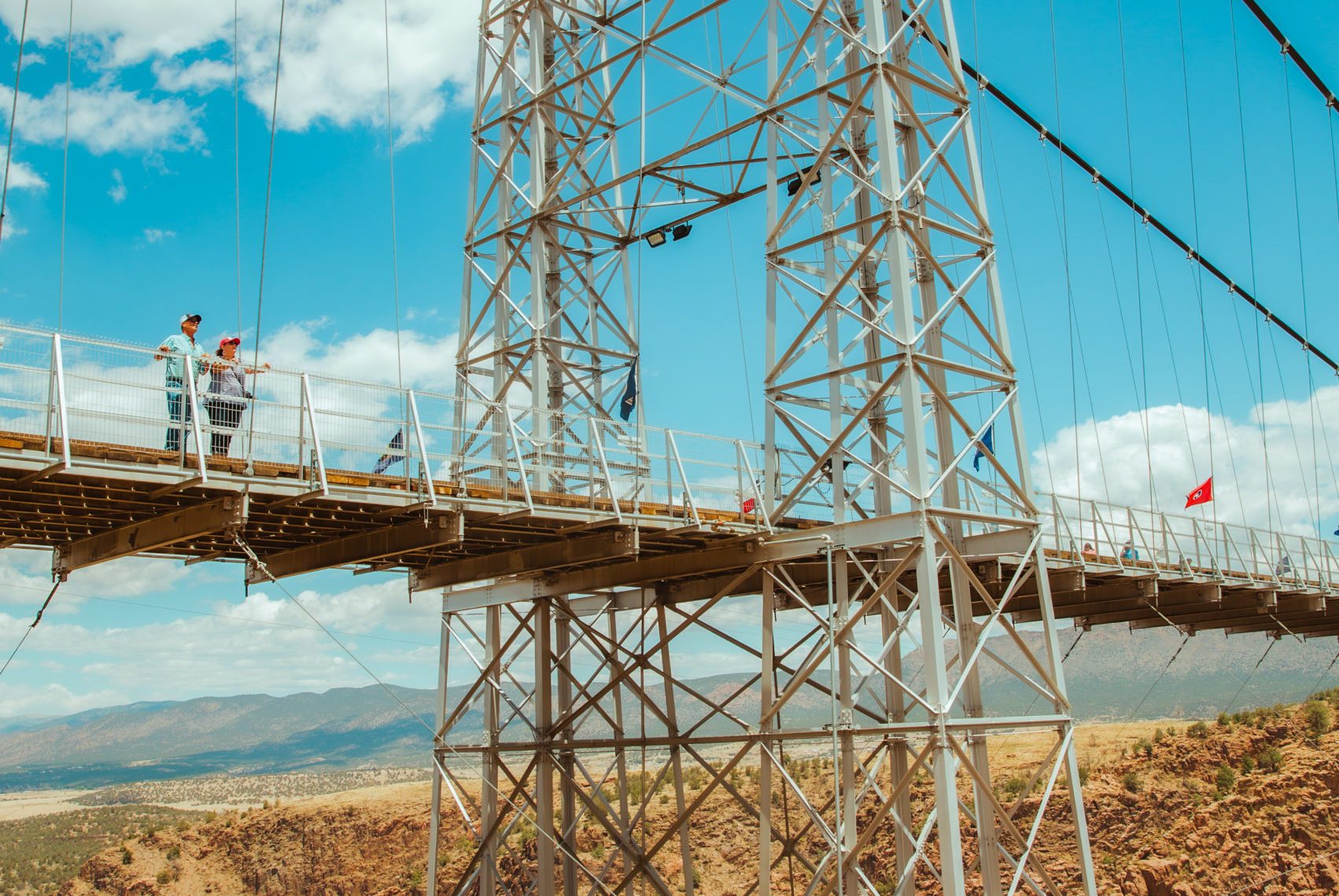
Royal Gorge Bridge & Park, Cañon City, Colorado
Based at a southern Colorado family amusement park, the Royal Gorge Bridge provides impressive 360-degree panoramic views that can reach as far as Pikes Peak Mountain, about 60 miles away. In fact, the surrounding scenery is why this structure was built in 1929—to encourage passersby to stop and take in this namesake granite gorge. The bridge underwent a massive refurbishing in the early ’80s, and today, there are 1,260 feet between two towering 1,200-foot walls of the Royal Gorge.
In June 2013, the bridge suffered minimal damage on its south side due to the Royal Gorge Fire that swept through and destroyed 90 percent of the park; the latter was rebuilt over the course of 14 months. During the summertime, all 50 U.S. state flags are flown along both sides of the bridge, making for a nice selfie op with the gorge as your backdrop. Here are some tips for super likable captions on your Instagram posts.
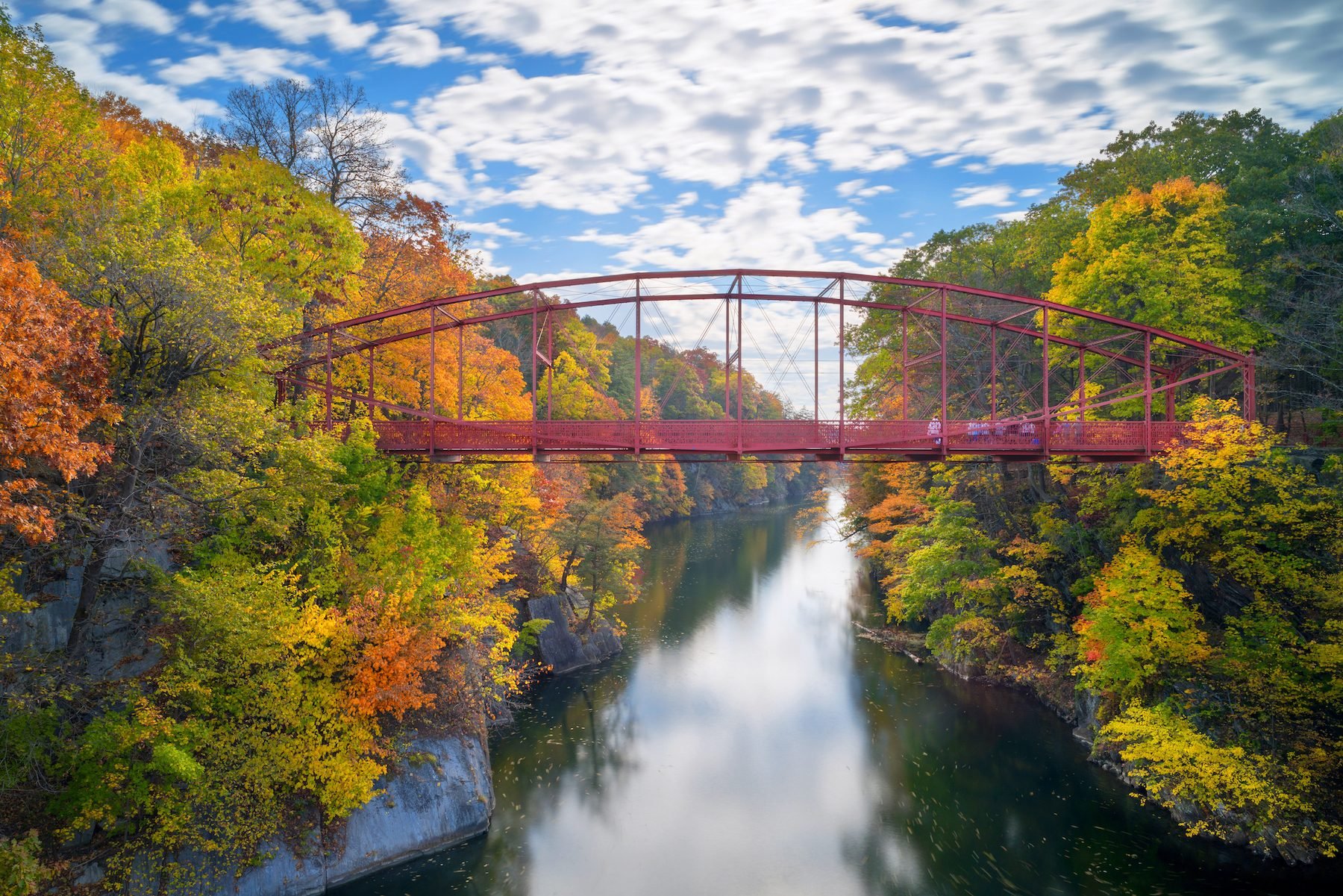
Lover’s Leap Bridge, New Milford, Connecticut
Found in Lover’s Leap State Park, this bright-red, circa-1895 lenticular truss iron bridge truly provides a romantic spot for any nature lover. It’s not only located near hiking trails with quintessential views of the Housatonic River—the spot is also steeped in a local myth involving an ill-fated love story. The 173-foot-long bridge was one of the last built by the Berlin Iron Bridge Company, a Connecticut company that is credited as the architect of numerous bridges and buildings now listed on the U.S. National Register of Historic Places. Check out the best state park in your state—and every other.
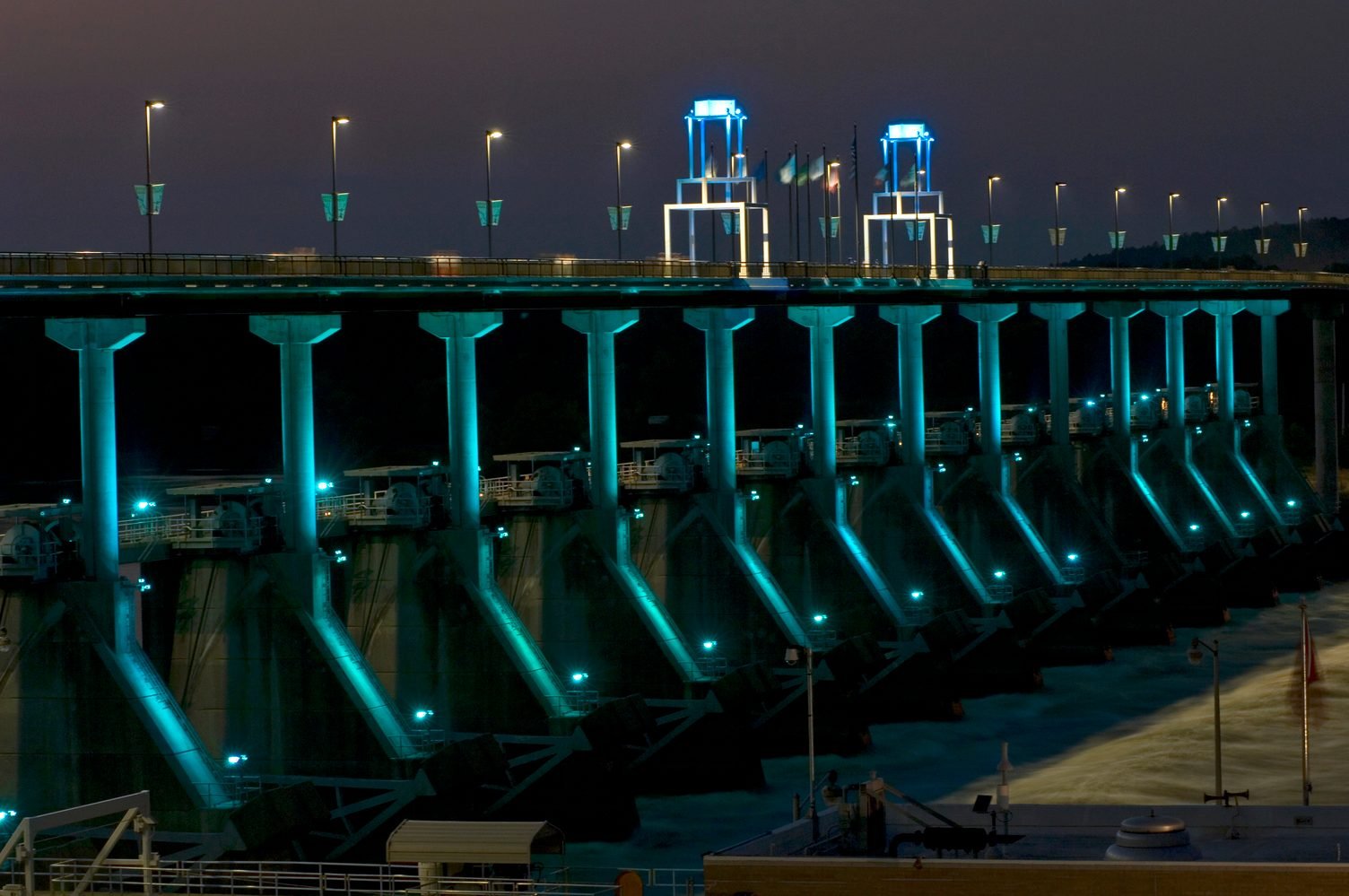
Big Dam Bridge, Little Rock, Arkansas
This bridge’s name is self-explanatory. It’s literally built on top of and into what’s known as Murray Lock and Dam, which spans along the Arkansas River—hence, the name, the big “dam” bridge. But there’s a lot more to this structure. At 4,226 feet, it has the distinction of being the longest bridge built for pedestrian and bicycle traffic in North America. It is also part of the Arkansas River Trail, a 17-mile loop connecting the cities of Little Rock and North Little Rock, and hosts the Big Dam 100, Arkansas’ largest cycling race.
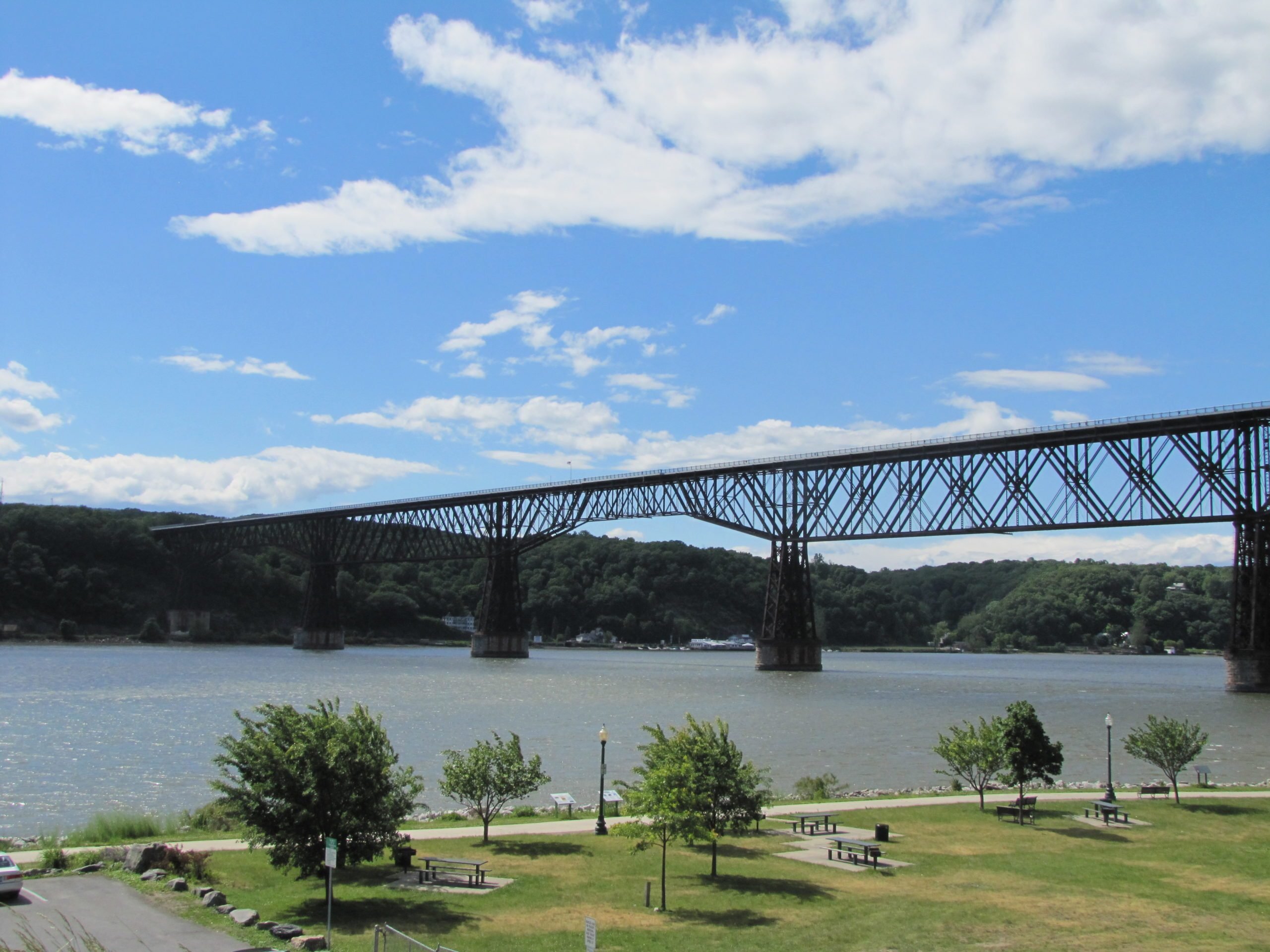
Walkway over the Hudson, Poughkeepsie and Highland, New York
This walkway has seen many travelers. Opened in 1889 to transport Western freight back east, as well as take passengers to and from major Eastern cities, the former Poughkeepsie-Highland Railroad Bridge was once the longest bridge in the world. (In case you were wondering, these are some of the world’s longest bridges today.) According to the walkway’s website, at its peak, as many as 3,500 rail cars crossed it each day. During World War II, it carried troops being shipped overseas and was painted black to make it less visible in the event of an enemy attack.
A devastating track fire in May 1974 put the brakes on its operation and led to decades of decline. However, the defunct rail line was rebuilt and reopened in October 2009 as an elevated pedestrian bridge. Now, more than 500,000 annual visitors visit this 1.28-mile-long walkway that’s 212 feet above the Hudson River to take in views north to the Catskills and south to the Hudson Highlands. Also, an ADA-compliant 21-story glass elevator provides seasonal access from Poughkeepsie’s waterfront at Upper Landing Park.
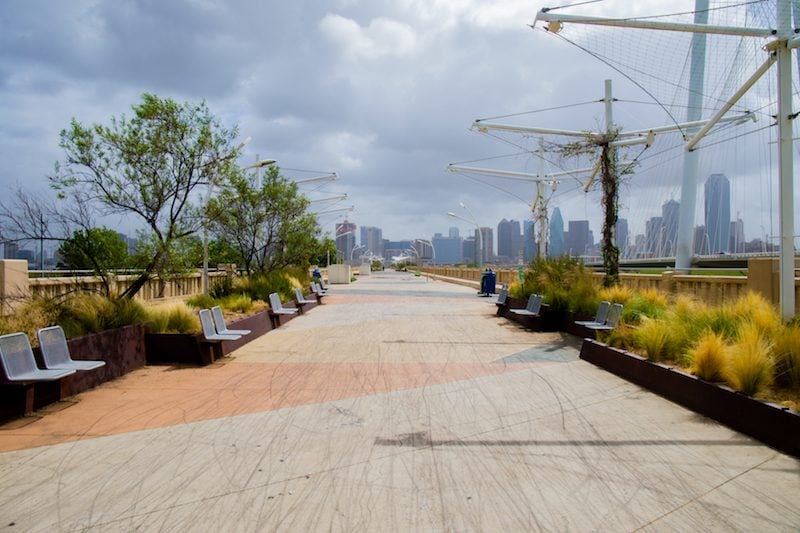
Ronald Kirk Bridge, Dallas, Texas
In the 1930s, this bridge was built as a viaduct to carry cars over the Trinity River. It was renamed in 2016 from Continental Avenue Bridge to Roland Kirk Bridge, in honor of the city’s first black mayor. Six years prior, the bridge had fallen into serious disrepair, and in 2012, the newly built Margaret Hunt Hill Bridge started handling vehicular traffic instead. On Father’s Day 2014, the bridge (still called the Continental Avenue Bridge at that point) reopened with other new features that made it a public gathering spot, including a playground, lounge chairs, human-sized chess boards, and a wide variety of community programming.
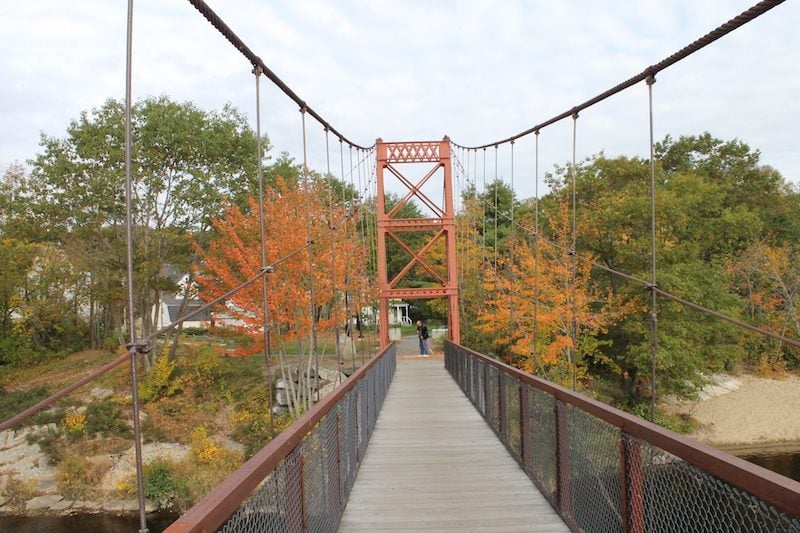
Androscoggin Swinging Bridge, Brunswick and Topsham, Maine
Completed in 1892, this suspension bridge, which crosses over the Androscoggin River, was constructed specifically for Cabot Mill workers living in the Topsham Heights neighborhood to walk to their jobs at the mill in Brunswick. It was developed by the same engineering firm, John A. Roebling’s Sons Company, that designed and built the Brooklyn Bridge. Once this Maine bridge was completed, the towns of Brunswick and Topsham were left with the responsibility of maintaining it. The first major task of upkeep came in 1916 when the bridge’s wood towers were replaced with steel ones. Then, a spring flood in 1936 severely damaged the bridge, and the Works Progress Administration stepped in to replace its span and resurface the tower platforms with concrete.
By the time the 21st century rolled around, the bridge needed some serious TLC. A committee studied the bridge’s history and determined how to obtain private funding and grants for repairs. Their efforts paid off, as the bridge was rehabilitated in seven months in 2006, with a grand reopening in September 2007. Since then, the Save Our Swinging Bridge non-profit has looked after this structure’s well-being. Next, check out the best free tourist attraction in every state.
